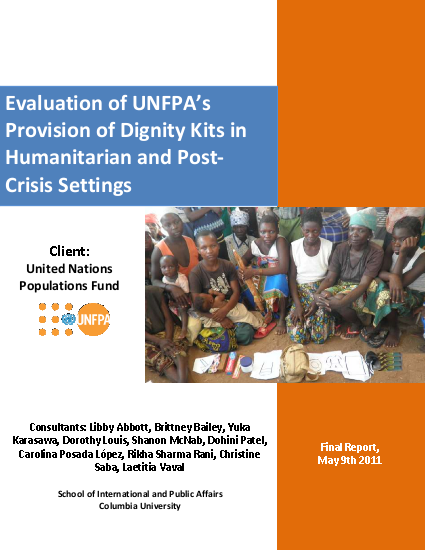
In early 2000 the United Nations Fund for Population identified a gap in addressing women’s needs in humanitarian response. As a result, the Fund began providing basic hygiene kits, but included items (such as panties and sanitary pads, where culturally appropriate) to meet the specific needs of women and girls with the purpose of facilitating their mobility and helping restore their dignity during times of crisis. These kits were branded ‘dignity kits’ and have become a significant part of UNFPA’s role in humanitarian response. The report said that the evaluation faced a number of constraints, the most significant of which was selection bias due to the selection of participants for focus groups and key informant interviews in a non-random way. Such participants are usually selected purposively rather than randomly, so perhaps the issue is that UNFPA rather than the evaluation team did the selection. The team recommended providing dignity kits based on a phased strategic decision process rather than making them a universal component of UNFPA’s humanitarian response, and giving thoughtful consideration to the position of dignity kit provision within UNFPA’s overall humanitarian response strategy. At a minimum, three basic conditions should be met in order for any dignity kit intervention to be undertaken. First, dignity kits should be distributed only as part of an integrated, coordinated response. Second, the CO must be able to distribute dignity kits in a timely manner, as determined by the exigencies of the emergency. Third, dignity kit provision should serve as an entry point for UNFPA’s broader programming on RH, GBV, HIV prevention and psychosocial support. Where dignity kit provision may not be appropriate given the absence of these conditions, the team recommends that UNFPA assume an aggressive role in advocating for the inclusion of issues related to its mandate in emergency response efforts.